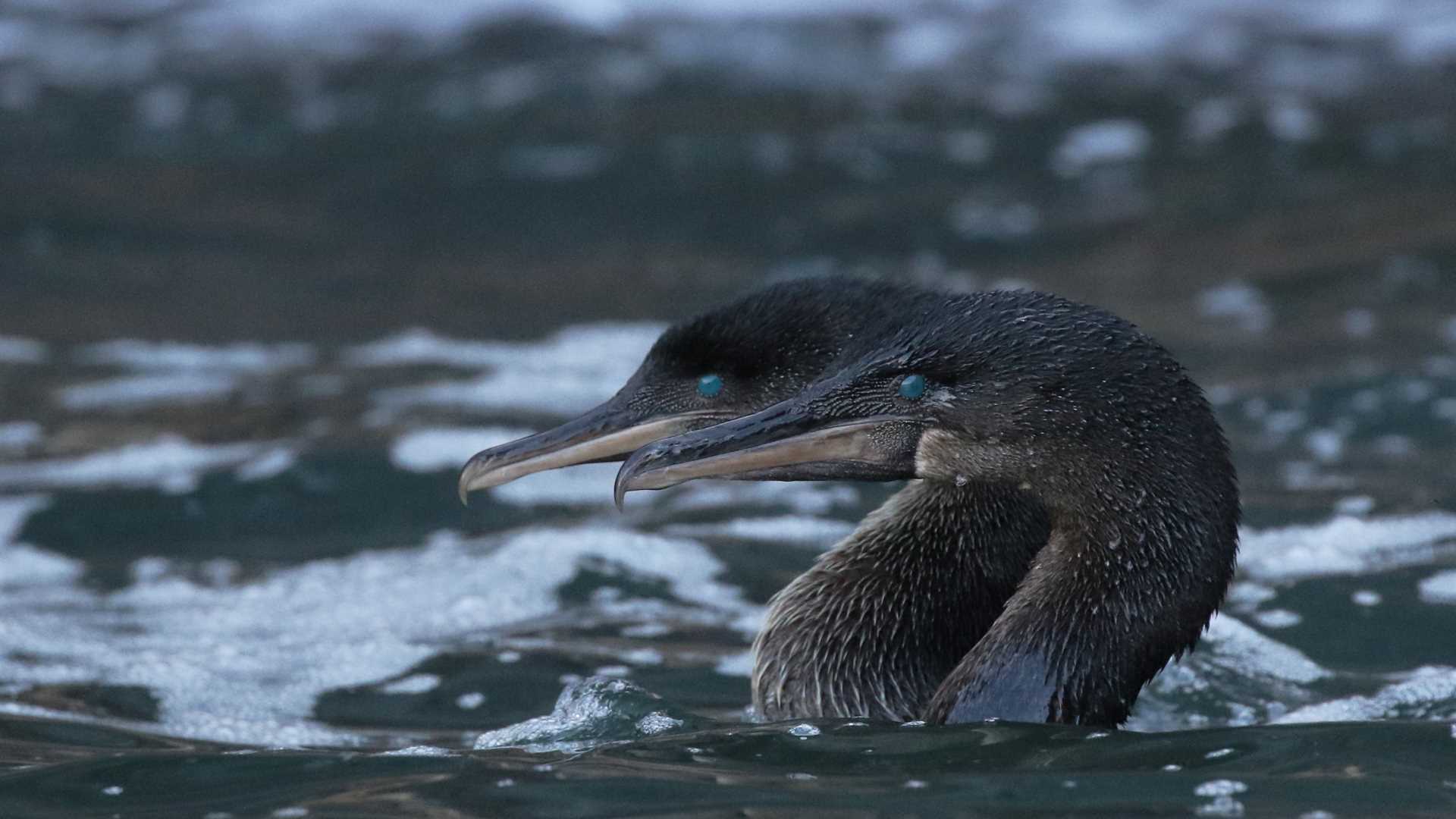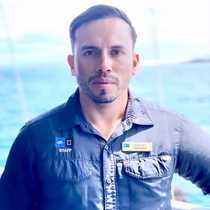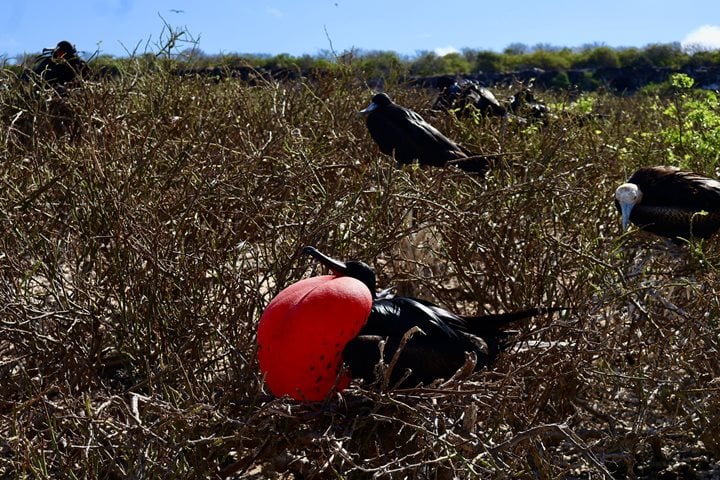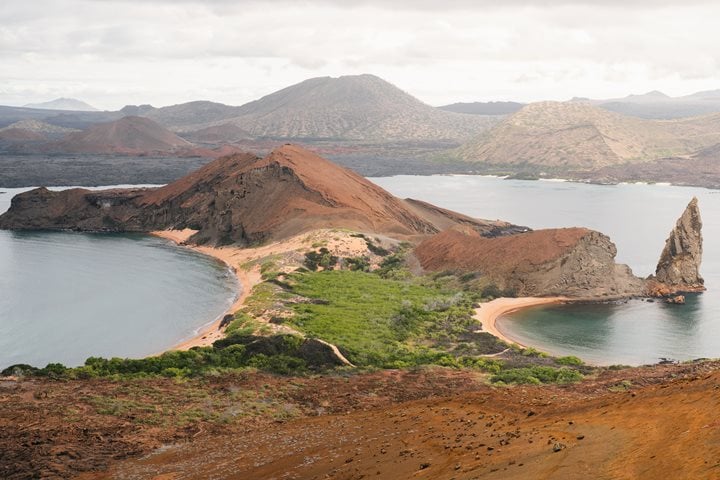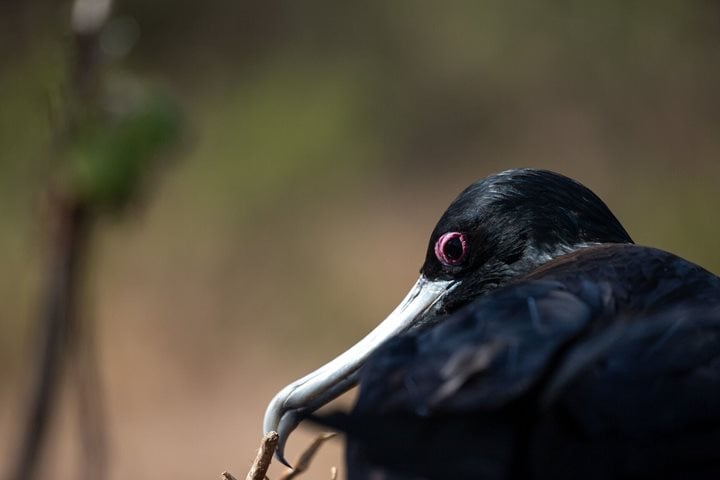The National Geographic Endeavour dropped anchor this morning off the coast of the youngest island in the archipelago—Fernandina. The landscape has only a few trees here and there, but unique species spread around every inch of this visitor’s site, known as Punta Espinoza. After our dry landing, we were welcomed by several marine iguanas basking under the equatorial sun.
There were so many marine iguanas on the black lava fields, the whole path was covered with them. After eating the green algae from the rocky bottom of the cold ocean, they have to heat up their bodies to digest the fresh feast—and the black lava rocks are the perfect place to warm up quickly. A Galapagos hawk was soaring through the sky over the barren territory; this is the top predator on land.
During our hike, we found many Sally Lightfoot crabs, as well as lava herons that were feeding on all the organic material left behind from the low tide. Our snorkeling afterwards was one of the best ones I have had at this visitor site. Many Pacific green sea turtles were seen feeding on the green algae, as well as marine iguanas, sea lions, an octopus, and several species of fish. We even had a couple of Galapagos penguins swim right next to us as they chased a school of sardines.
In the afternoon, our vessel navigated towards Punta Vicente Roca, found in the northern region of Isabela Island. During our navigation, we were able to spot a pod of approximately 150 common dolphins, performing quite a show to our delight. This is one of the perfect places to have the chance to go on a Zodiac ride along the coast, and we lucky enough to spot some fur seals (which are truly sea lions), Pacific green sea turtles, several ocean sunfish, flightless cormorants, and blue-footed boobies. We also crossed the equator line. Enjoying a perfect sunset from the ship’s deck was the best way to end another day in this enchanted archipelago.

